China’s Water Reserves and World’s Warming Atmosphere Wait For Natural Gas Breakthrough
China’s deep shale reserves are treacherous to tap and slow to develop.
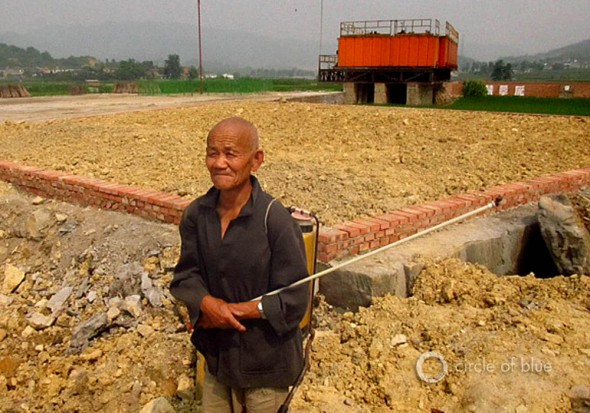
By Keith Schneider
Circle of Blue
XINCHANGZHEN, China — Liu Zhongqi’s mud-and-brick home sits in a cluster of hillside houses in the village of Lao Chang, a serene half-circle of settlement on the west side of this misty Sichuan Province valley.
A few steps away is a flooded paddy, about half the size of an American front lawn, where Liu raises rice. Next to that is a slightly larger and deeper pond where he produces fish. And just beyond Liu’s fishpond is something very new here and potentially momentous: Wei-201H3, one of China’s first horizontally drilled and hydro-fracked deep shale natural gas wells.
The completion of Wei-201H3 in January 2012 — and the earlier development of two other deep shale wells, drilled within a half-kilometer of Liu’s home — introduced more than the sounds of diesel engines and other industrial dissonance to Lao Chang. The new wells, residents told Circle of Blue, have wrecked the pastoral iconography of this valley, a place where repetition and water weave together a centuries-old rural mosaic of green fields and dark ponds.
“They came here one day,” Liu said. “It’s been hard. Very hard.”
China’s nascent shale gas industry began in November 2009, when U.S. President Barack Obama and Chinese President Hu Jintao signed a bilateral agreement to deploy U.S. expertise to develop China’s deep shale gas reserves and direct Chinese capital to finance the much more mature American shale gas sector.*
The bilateral pact – formalized in a Beijing ceremony that attracted global media attention – also spurred Chinese and Western energy companies to develop partnerships and dispatch crews and rigs to drill experimental deep shale natural gas wells like Wei-201H3 in this bucolic and densely populated Sichuan valley.
The goal here in Sichuan — and in half a dozen other energy-rich Chinese provinces — is two-fold:
- Reach a national production target of 6.5 billion cubic meters (229 billion cubic feet) of shale gas by 2015; only 60 to 90 deep shale wells have been drilled to date nationally.
- Duplicate the American shale gas boom.
“We’re just starting to understand what we need to develop shale gas,” said Zhang Mi, chairman and president of the Hong Hua Group, a manufacturer of drilling rigs based in Chengdu, a city of 14 million residents about 140 kilometers (90 miles) north of Lao Chang. “Exploration is in the experimental stage. From my perspective, Sichuan is China’s Texas for shale gas development.”
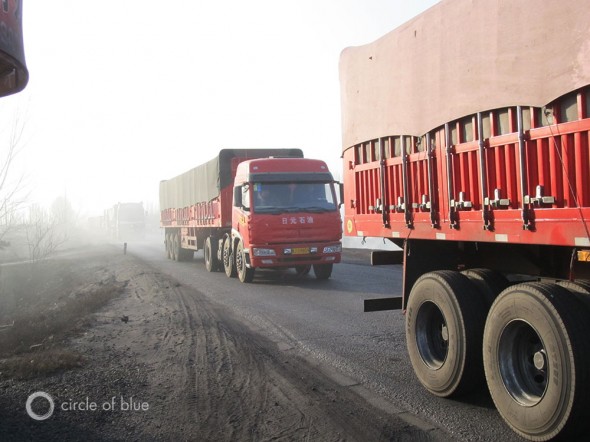
But many of Sichuan’s field engineers, analysts, industry executives, and resource managers say there is convincing evidence that China’s shale gas industry is developing at a much slower rate than either Chinese or American leadership had anticipated — in other words, it is hard to see how China expects to even come close to meeting its 2015 production goal. China’s shale gas sector is buffeted by uncertainty about the quality of its shale reserves, concerns about scarce freshwater supplies, competition from other energy sources, the potential safety threats posed by a byproduct poison gas, and emerging civic distrust.
As a result, shale gas development has yet to move any faster than a very slow crawl.
Why Shale Gas, Why Now?
China, the world’s largest energy producer and consumer, mines and processes more than 3 billion metric tons of coal annually to fuel its expanding economy, or 76 percent of China’s total energy use. But coal, the nation’s second-largest industrial user of water, challenges water security in China’s northern and western desert provinces, where 70 percent of the nation’s coal is produced and processed.
The energy-water imbalance is the principal source of a cycle of escalating economic and environmental risk that China’s leaders — as well as heads of state around the world — are anxious to solve.
Yet, even though China finances and manages the world’s largest programs for developing cleaner, non-fossil energy industries — wind, solar, nuclear, and hydropower — China’s energy demand is rising so fast that, without a breakthrough in energy supply or efficiency, coal will still make up 70 percent of the nation’s energy portfolio in the next decade.
Shale gas development promises to help resolve the confrontation between rising demand for energy and declining freshwater reserves, along with other potentially huge benefits, not the least of which is to the environment. If, for instance, China’s shale gas producers reached the 2015 production goal and natural gas were to replace coal in generating electricity, annual emissions of carbon dioxide would be cut by 14 million metric tons, sulfur dioxide by 115,000 metric tons, and nitrogen oxides by 43,000 metric tons, according to government calculations.
Mindful of the rapid development of deep shale gas reserves in the United States, the central government became convinced that China could duplicate America’s astonishing success.
Domestic Supply Not Meeting Increased Demands
Over the last 16 years, China’s domestic natural gas production has increased six-fold from 17 billion cubic meters (600 billion cubic feet) in 1995 to 102 billion cubic meters (3.81 trillion cubic feet) last year — yet natural gas still only represents less than 5 percent of China’s total energy supply.
Almost all of China’s gas comes from so-called “conventional” sources, the deep underground fissures that are tapped primarily by vertical wells. Furthermore, China’s natural gas demand last year reached 130 billion cubic meters (4.6 billion cubic feet), which is 21.5 percent more than was produced domestically. The difference had to be imported as liquid natural gas (LNG) from Australia, which supplied 17 billion cubic meters, and from other nations, including from Turkmenistan via the Central Asia-China Gas Pipeline, which supplied 60 percent of last year’s total natural gas imports to China.
Over the next 18 years, government authorities project that China’s natural gas consumption could experience a further five-fold increase, reaching more than 600 billion cubic meters by 2030. Already along China’s Pacific Coast, 15 port cities are building or have received approval to construct terminals to facilitate increased imports of liquid natural gas.
But China is also setting big production goals for its domestic shale gas supplies.
It appears that China’s shale gas reserves are huge. Last year, geological survey and energy development agencies in China and the U.S. estimated that China’s “technically recoverable” shale gas resources measured nearly 40 trillion cubic meters (almost 1,300 trillion cubic feet), which is larger than those in any other country, including the United States.
In March, China’s central government announced the goal of producing 100 billion cubic meters (3.5 trillion cubic feet) of shale gas annually by the end of the decade, an amount roughly equivalent to China’s current domestic natural gas production from conventional reserves.
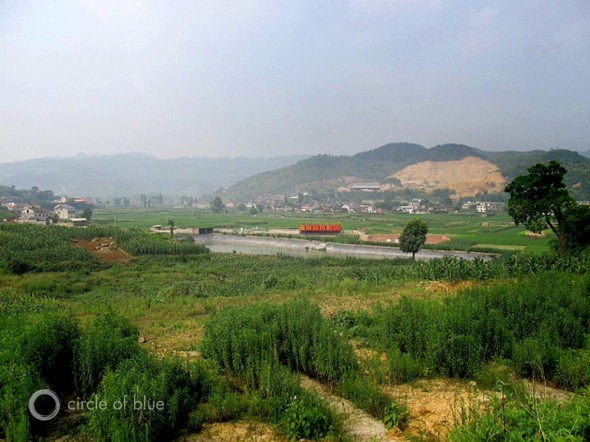
Doing so would require more than 17,000 new shale gas wells to be drilled over the next eight years, given that each well would be performing as well as the typical U.S. shale gas well, producing about 28,000 cubic meters (1 million cubic feet) of gas a day. However, industry executive say that, over the course of the last year, China has been drilling an average of only two new shale wells a month, and they have been cautious about publishing the success and production rates of those wells.
Moreover, they say that it will take decades longer to produce quantities of natural gas sufficient enough to be a significant replacement for coal, if it is possible at all.
“You will hear talk in Beijing about interest in shale gas, but China is not developing this resource aggressively enough,” Zhang Mi told Circle of Blue. “There are technical problems that I think we can solve, but there are government problems that will be harder to solve. China’s development officials don’t want to get shale gas out of the ground. The state energy companies have coal and conventional gas reserves they want to develop first.”
“Information on what is happening here is secret,” he added. “In China, maybe there are 10 people – 20 people, at the most – who really know. That’s all.”
Unconventional Sources Elude Chinese Producers
In March 2012, a report by the Oxford Institute for Energy Studies agreed that there are certain barriers to shale gas production that China may never surmount. Among them is China’s 25-year history of missteps and technical lapses in developing coal seams for natural gas.
Coal seam gas, also known as coal-bed methane, is natural gas that occurs in underground coal seams. China’s CSG reserves are comparable to its shale gas resources, and both occur at much larger volumes than do the nation’s conventional natural gas reserves.
In the mid-1990s, China had projected that it would produce 8 billion cubic meters (282 billion cubic feet) of CSG annually by 2010. However, just 4.3 billion cubic meters (152 billion cubic feet) of marketable CSG were produced in 2011 — or just 4 percent of the China’s annual domestic natural gas production.
“China is among the countries outside the United States which face a reality check on their shale gas ambitions,” wrote Fan Gao, author of the Oxford report and a research fellow at the university’s Institute for Energy Studies.
Indeed, of all the big national projects that China has taken on in the last two decades — closing in on complete food and energy self-sufficiency, modernizing big cities, building a state-of-the-art air and ground transportation sector, becoming the world leader in wind and other clean energy development — adding unconventional domestic sources of natural gas to the fuel supply has eluded China.
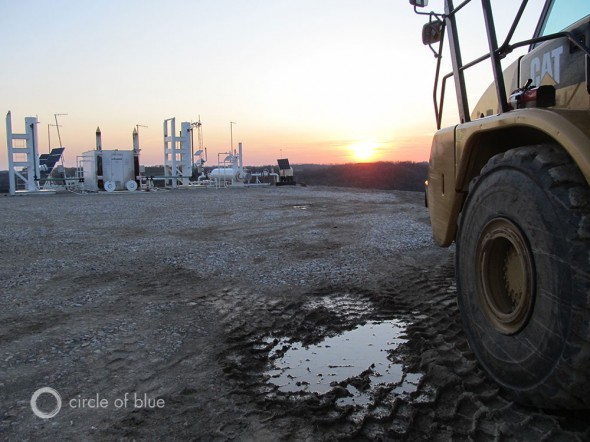
And there are ample reasons to believe that China’s disappointing record could persist.
Challenging Geology: With current shale-tapping technologies, China’s deep shale gas reserves are proving to be much more difficult to develop than those in the United States have been. For starters, China’s shale formations are not as dense, as uniform, or as saturated with hydrocarbons as are those in the United States and in Canada, say engineers.
“The structure of the shale formations is different in China than in the United States,” said Giu Fangda, an engineer with Shlumberger, the big Houston-based global oilfield services company. “They are a little softer and harder to develop.”
Furthermore, the success rate for producing marketable quantities of gas in the wells that have been drilled in China to date is less than 50 percent, much lower than the 80 percent and higher average in the United States.
Pressure tests and other measurements of gas productivity in shale vary widely across Sichuan Province, said Tuo Wei, a 26-year-old engineer with Great Wall Drilling, a gas field service company. “Some tests look good. Others really don’t.”
One result is that developers are proceeding very cautiously. Consider that only 60 to 90 deep shale gas wells have been drilled in all of China over the last three years. In contrast, more than 2,100 wells were drilled in 2010, at the height of Pennsylvania’s shale boom. One major difference is that, here in Sichuan, China’s primary shale development region, shale reserves are 3,300 meters (11,000 feet) beneath the surface, or twice as deep as the typical well in North America. Thus, drilling costs here are two to three times higher than they are in the United States.
Capacity Gaps: Just meeting the 2015 target for production — 6.5 billion cubic meters (229 billion cubic feet) of shale gas — will require at least 1,000 new wells, though likely many more, and $US 10 billion in investment. But developers in China have not identified a fraction of the well locations to support that level of production and likewise have not secured the capital, technology, infrastructure, or technical expertise for such a large drilling campaign.
PetroChina, a major player in Sichuan, drilled eight wells from 2009 to 2011, according to published reports. It is now drilling less than one new well a month in Sichuan, according to Tuo Wei, the Great Wall Drilling engineer. And there are less than 10 shale drilling rigs currently operating in the province, according to Zhang Mi of the HongHua Group.
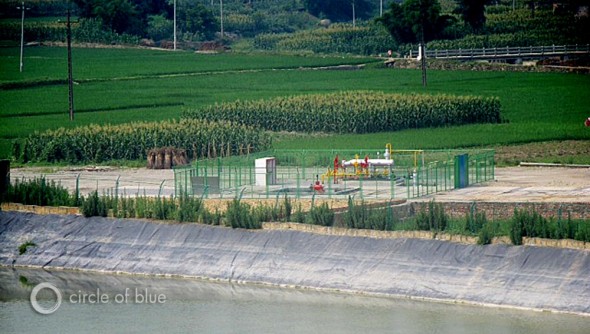
Water Shortages: Existing hydro-fracking technology requires that each horizontally drilled well receive 19,000 to 26,500 cubic meters (5 million to 7 million gallons) of water, mixed with chemicals and sand, per frack. The process involves pumping the mixture down the well at ultra-high pressure to crack the rock and release the gas. Fortunately for well drillers, Sichuan is one of China’s wettest provinces. But the water supply in the northern and western desert regions – where there are thought to be additional large supplies of shale gas – is already very tight and reserves are diminishing. As a consequence, environmental and water management officials in these provinces are resisting shale gas production unless new developments in fracking technology can significantly reduce the industry’s need for huge quantities of water.
“We just don’t have enough water,” said Wang Xiufeng, director of design and planning in the Municipal Water Management Bureau in Urumqi, the capital of China’s far northwest Xinjiang Uyghur Autonomous Region.
Dangerous Gas: Hydrocarbon reserves in Sichuan contain high concentrations of hydrogen sulfide(H2S), a deadly gas. Hydrogen sulfide is a common byproduct of oil and gas production around the world, characterized at low concentrations by a rotten egg scent. Breathing in air that contains hydrogen sulfide at higher levels — 500 parts per million (ppm) or more — is lethal for individuals and catastrophic for communities. According to the gas industry’s technical reports, some shale gas reserves in Sichuan contain as much as 2,000 ppm or more.
“Sichuan’s shale is a source of high concentrations of H2S, and people know they need to be careful,” said Giu Fangda of Shlumberger.
But China’s recent hydrogen sulfide safety record is fearsome. On December 23, 2003, in Sichuan Province’s Kai County, the East Sichuan Drilling Company lost control of a conventional natural gas well. The geyser of escaping gas contained such high concentrations of hydrogen sulfide that public records reported 243 people were killed; 2,142 people were hospitalized; 65,000 people were evacuated; and thousands of household pets and farm animals perished.
The accident has prompted provincial authorities to be very cautious in their review of new applications for shale well drilling permits, requiring companies to submit evacuation and safety plans.
“The industry is aware of the risks,” said Giu. “It’s a serious problem that requires people to pay attention to what they are doing.”
Public Opposition: China has no system of private property ownership, so farmers occupy land under long-term leases from municipal or provincial governments. Some — like Qiu Su Qing, a mother and homeowner in her 30s — find that their leases are too easily broken, often without any compensation or relief, when oil and gas companies want to drill.
“They took the land we used for rice,” she said, noting that the land was seized with scant notice in 2009, before Wei201H3 was drilled. Though the family was allowed to keep their home near the rice paddy, they were promised both compensation and another parcel close by to farm rice. “We were told we could have other land. That did not happen.”
Land seizures like this raise the specter that shale development — which is estimated to require tens of thousands of wells to be able to produce shale gas at the levels that China is hoping to achieve — could provoke public protests in a nation where civic strife over environmental issues is already increasing. Just one drilling pad typically covers one to 1.5 hectares (about 2.5 to four acres) during drilling and about a half-hectare (one acre) during the life of the well. And because most of the land in Sichuan’s drilling zones is currently used for crops, virtually every hectare occupied by drilling pads and wells in the future would be seized from a farmer.
A Growing Popular Distaste: In the village of Lao Chang, Liu Zhongqi’s and his neighbors assert that ever since the three deep shale wells were drilled — by PetroChina, China’s biggest oil company — their fields and paddies are not as productive. Liu told Circle of Blue that fish in his ponds are dying and that he has repeatedly been ignored when he has complained to local officials. Several families complain that the pressure in their water wells has diminished since Wei-201H3 was finished a year ago.
“My well doesn’t pump as much as it did before,” said Qiu Si Qing, the mother whose rice paddy was seized. “I thought it was the pump. Other people here told me the same thing happens with their wells.”
A Village Changed
On a still November morning nearly three years ago, the loud diesel growl of a convoy of flatbed trucks pulled off the highway and advanced along the muddy two-track road leading to Lao Chang. They carried various steel beams and angular collars of a big natural gas-drilling rig.
Over the next two years, drilling crews dispatched by PetroChina filled in rice paddies and laser leveled cornfields to install the nation’s first three deep shale natural gas wells.
It is far from clear what those wells represent today. Chinese officials insist the wells are the vanguard of a transformation in the domestic energy sector that is as significant as shale gas development in the United States. If that occurs, they also mark the opening of a China-U.S. technology-sharing and trade alliance that strengthens the economies of both nations and begins to substantially reduce China’s climate changing emissions.
Liu Zhongqi, though, has never felt any of that soaring majesty. He views the wellhead and a big rubber-lined waste pit alongside Wei-201H3 as a nuisance.
And there looks to be no middle ground.
PetroChina’s shale gas wells here in Sichuan Province are either the start of an epic enterprise — another stirring example of a rising nation’s capacity to diversify its energy sources, reduce climate-warming air pollution, and solve a dire contest between energy demand and water supply — or they are a bust that challenges the central government’s credibility and puts the residents of a peaceful settlement at the mercy of an oil company and a nation not much interested in their distress.
Choke Point: China is an on-going Circle of Blue series, produced in partnership with the Wilson Center’s China Environment Forum. Through frontline reporting, the project finds new and powerful evidence of a ruinous confrontation between water, food, and energy that is visible across China and is virtually certain to grow more dire over the next decade. Choke Point: China is part of Global Choke Point, which is uncovering new data and strategic narratives about water, food, and energy in the world’s most vulnerable regions.
Circle of Blue’s senior editor and chief correspondent based in Traverse City, Michigan. He has reported on the contest for energy, food, and water in the era of climate change from six continents. Contact
Keith Schneider

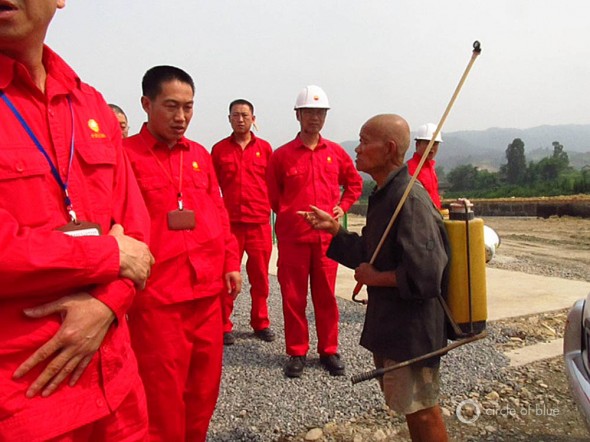


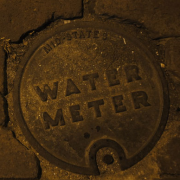
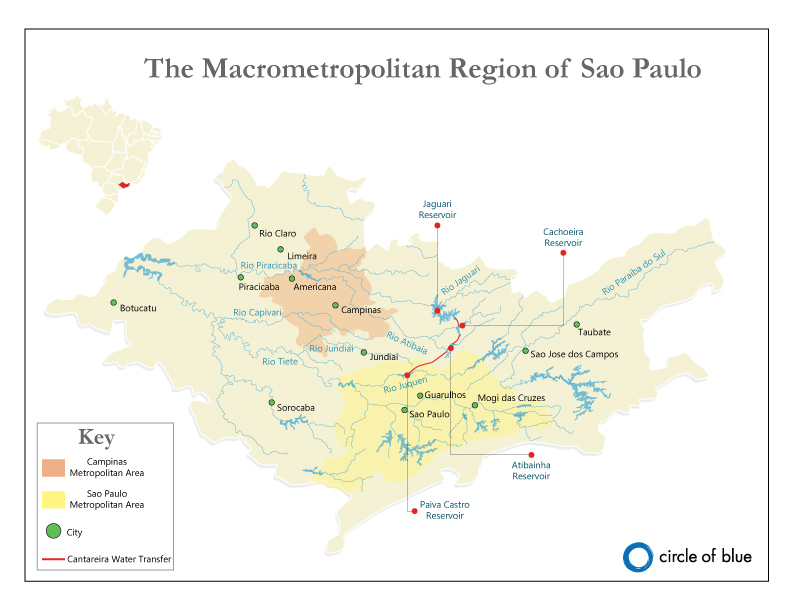






Dear Sir,
I read your article with great interest. You do an excellent job presenting the dilemmas and trade-offs facing the developing shale gas business in Sichuan. One point you raised conerns me: your reference to H2S. My understanding is that H2S is NOT present in the sandstone formations in Sichuan – for example the FuShun and Jinqiu blocks. I am concerned that you are suggesting that all shale gas wells in Sichuan encounter H2S, which is not the case. The message comes across as alarmist and may cause unecessary fear to the public, if they assume that all shale gas developments could lead to H2S related deaths. I suggest you qualify this point with an explanation that H2S is only encountered at certain depths and under certain conditions and that most wells in the badin do not contain H2S. Thank you